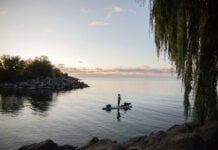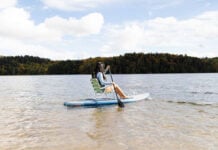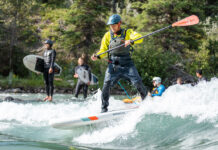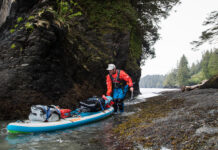On an unusual Monday last March, in the hamlet of San Luis Río Colorado, in the Mexican state of Sonora, hundreds of people gathered below a bridge that spans the dry channel of the Colorado River. The polka-beat of Ranchero music mixed with the sound of laughter across the sandy basin. It was a party of all ages and everyone waited for the guest of honor: agua.
Located 23 miles downstream of Morelos Dam—the last dam on the Colorado—San Luis is where the river finally leaves the border behind and journeys into Mexico. From here, the riverbed winds 80 miles to the Sea of Cortez. But for nearly two decades, water has rarely escaped the sealed downstream gates of the dam.
Instead, Mexico’s entire Colorado River allocation turns west—diverted into the giant, concrete irrigation Reforma Canal. What is left below is a river of sand.
But at 8 a.m. on Sunday, March 23, the red steel gates glided open, releasing the beginning of a 105,392-acre-foot “pulse flow”—roughly the amount it would take to cover a football field in one foot of water. This blast of moisture, de-signed by hydrologists to mimic a natural flood, represents what many thought to be the unfathomable—an international partnership to bring a river back to life.
By Tuesday, the party by the bridge had significantly swelled. The river was late, but no one seemed deterred. I asked two men in business suits why they braved the heat here on this sunny afternoon.
“We are here to see the water, of course. Do you know where it is?”
“We are here to see the water, of course. Do you know where it is?” they asked in Spanish.
As a boy growing up on a cattle ranch near the headwaters of the Colorado, I often pondered that. How long would it take that water—snowmelt originating in the 14,000-foot peaks shrouding the valley—to cross our fields, gurgle down creeks, merge with the mighty Colorado, and make the 1,450-mile march across seven states and northern Mexico before it terminated in the Sea of Cortez?
Although neither the longest nor largest river in the United States (it is the seventh), the Colorado is one of the most loved. The economies and lifestyles of over 36 million people rely on it, as does America’s entire commercial winter salad bowl crop. Yet as a growing population collectively moans for more water, the Colorado River groans from another dehydrating straw. The river’s delta in Mexico is alarming proof of such thirst—not a single drop of the Colorado River had reached the sea since 1998.
The pulse flow experiment in March changed everything—temporarily. By Wednesday, March 27, the San Luis fiesta had quadrupled. Like everyone else, I was stopped in my tracks when agua finally made its debut. Inch by patient inch, the river moved down its old dusty path toward the San Luis bridge. A sense of giddiness grew with every foot the water advanced. Fireworks popped, kids splashed in the shallows, cowboys danced horses, and ATVs and dune buggies roared, rooster-tailing sand into the afternoon light.
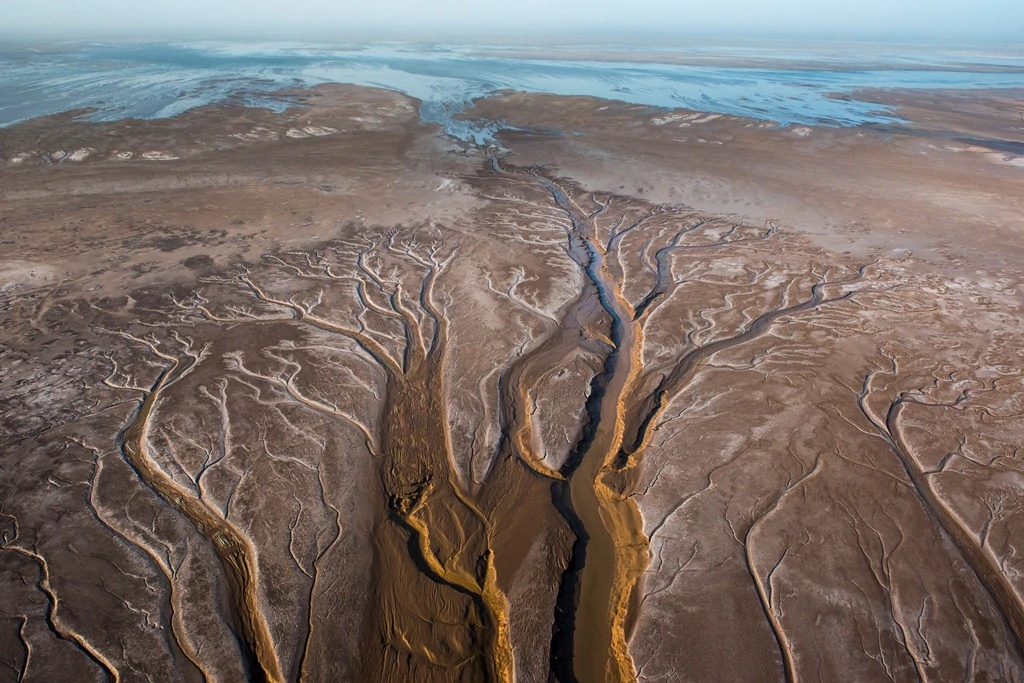
To see the results of the pulse flow, I joined a few friends and did what any river lover would do. We took canoes and SUPs downstream. We experienced breathtaking beauty bustling with wildlife, but also desperate hours of belly crawling through mesquite thorn thickets, 107-degree heat, swarms of infuriated mosquitoes and were forced to do nighttime stealth maneuvers to dodge drug traffickers.
In 1922 the American conservationist Aldo Leopold took a canoe down the delta and wrote, “The river was nowhere and everywhere, for he could not decide which of a hundred green lagoons to take to the sea.” Before that, steam ships navigated the delta carrying passengers from Arizona to California.
“The river was nowhere and everywhere, for he could not decide which of a hundred green lagoons to take to the sea.”
We did find moments of a river nowhere and everywhere. After eight days spent paddling 92 miles through coiling green waters and shallow mucky salt flats, we reached the high tide line of the Sea of Cortez. It was the first SUP expedition across the new delta—hopefully not the last.
Was it an absurd mission? Sure, but our journey symbolized the power of people working together—that it is possible to revive one of the world’s great rivers, starting with a trickle.
As the sun set across the delta, we opened a special bottle of wine for the occasion, celebrating fresh water kissing the sea. With skin covered in salt, clay and black mud, we toasted skyward to a living delta, nowhere and everywhere before us.
Watch award-winning photographer and writer Pete McBride’s short film about this journey at www.petemcbride.com.
Delta Dawn from Pete McBride on Vimeo.




